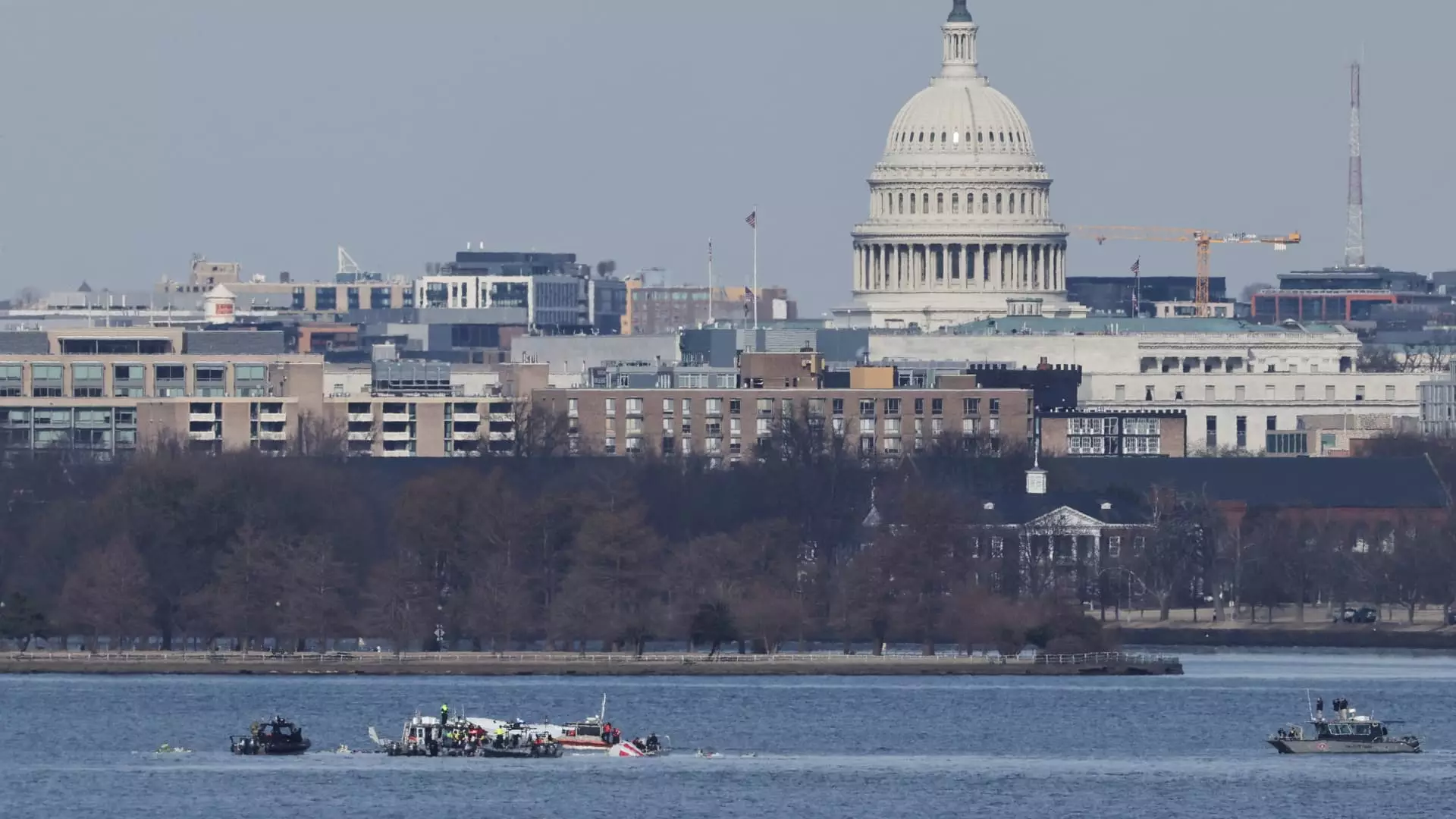On a fateful Wednesday evening, a catastrophic collision between an Army Black Hawk helicopter and an American Airlines jetliner over the Potomac River has led to grave consequences, resulting in the deaths of all 64 passengers and crew on American Airlines Flight 5342 and the three individuals aboard the Black Hawk. As investigators delve into the preliminary findings, the circumstances surrounding the incident remain perplexing and raise a plethora of questions regarding air safety protocols and the air traffic control environment surrounding one of the nation’s busiest airports.
The collision took place as the PSA Airlines Bombardier CRJ-700 approached Reagan National Airport, descending towards Runway 33 at about 300 feet. The time was approximately 9 p.m. ET. At this critical juncture, the helicopter was reportedly transitioning between designated air traffic tracks in a highly congested airspace—operating under the assumption that it was complying with Federal Aviation Administration (FAA) regulations, which typically dictate that helicopters must fly at altitudes below 200 feet near the airport, particularly in Washington, D.C.
This unfortunate event represents the most deadly air crash in the United States since 2001, reigniting discussions regarding aviation and cross-traffic safety, especially in busy urban environments like the nation’s capital. The collision’s impact was devastating, creating a fireball that incinerated evidence and claimed lives, effectively wiping out families and communities.
As officials comb through debris and recover bodies, the investigation helmed by the National Transportation Safety Board (NTSB) is under immense scrutiny. Among the many factors under examination are the flight data and cockpit voice recorders from the passenger aircraft, which are crucial for piecing together the final minutes before the collision. NTSB Chair Jennifer Homendy stressed the importance of verifying the gathered information, a process that sets the stage for a thorough and transparent investigation, albeit a painstaking one.
Compounding the investigative challenges is the announcement of runway closures at Reagan National due to the proximity of the crash site. At least two of the airport’s runways are out of commission for what is anticipated to be a week-long duration, involving delays and cancellations that further complicate air traffic. With over 100 flights canceled in the aftermath, the economic and logistical reverberations of this disaster are palpable.
Retired airline pilot and aviation safety consultant John Cox emphasized the challenges pilots face in crowded spaces as they focus on aligning with runways during landing approaches. The potential distractions and stress inherent in such a high-pressure environment underscore the critical need for precise air traffic control operations and situational awareness, which may have been hindered during this tragic incident.
The collision has put a spotlight on regulatory frameworks that govern helicopter operations near significant airspaces. Secretary of Transportation Sean Duffy indicated a plan to restrict helicopter access around Reagan National Airport, which could signify shifts in policy aimed at enhancing safety. The FAA’s regulatory mechanisms, designed for ideal compliance, are critically under review amid speculation about conductor errors and systemic failures within the aviation structure.
The initial findings pointing towards elevation discrepancies, as echoed by Defense Secretary Pete Hegseth and former President Donald Trump, raise alarming questions about accountability. Statements suggesting that the helicopter operated above the prescribed altitude stir controversy and imply negligence on the part of military operations that should adhere to stringent safety protocols.
Moreover, reports of reduced air traffic controller staffing during peak hours of traffic suggest systemic issues in managing airspace safety and reflect a concerning trend of neglect for essential roles in airport operations. The potential early departure of a supervisor in charge of helicopter traffic strikes a discordant note, raising alarms about prioritizing resources in the face of impending peril.
The aftermath of the Potomac air disaster calls for an urgent reevaluation of air traffic control protocols and more robust training requirements for operators in congested environments. With a decade and a half of air safety records on the line, strategic changes must be implemented to ensure such a tragic event never reoccurs.
As investigators sift through the wreckage, the memories of those lost serve as a solemn call to heighten awareness, compliance, and preventive measures across the aviation industry. Collaborative efforts among military, regulatory bodies, and commercial aviation stakeholders will be pivotal in navigating the turbulent waters of airspace safety into the future. With every crash, the aviation community learns valuable lessons, and it remains to be seen how this tragedy will shape future policies aimed at safeguarding lives in the sky.

